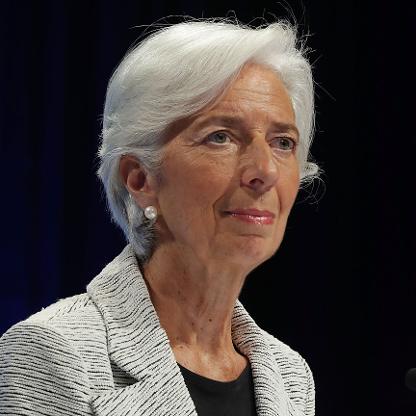By Christine Lagarde and John Bluedorn
“To define is to limit,” Oscar Wilde once said. But sometimes economists need to use definitions to see the scope of a problem and find ways to lift the limits to success. This is especially true for young people in emerging markets and developing economies. We know that young people are essential to economic development and growth. They make up approximately one-third of the working-age population in the average emerging market and developing economy.
We also know that global youth face tough labor markets and job shortages in countries all over the world. Approximately 20 percent of 15- to 24-year-olds in the average emerging market and developing economy are neither in work nor in school. Compare that to advanced economies where the average rate is 10 percent.
The social and economic costs of this gap are significant. Trust in society tends to be lower in countries with higher levels of youth inactivity, raising their chances of social conflict. A new IMF staff study shows that, if youth underemployment in the typical emerging market and developing economy was brought in line with the average advanced economy, the working-age employment rate would rise by 3 percentage points and economic output would get a 5 percent boost. That is the kind of game change that young people—and all countries—desperately need.
Policies that work for the next generation: How can we get there?
More and better education is part of the solution. But this alone will not be enough. Too many well educated young people struggle to find good jobs in emerging and developing economies.
Drawing on new analyses using both macroeconomic and microeconomic big data (tens of millions of individual-person data points), our research published today points to a series of policies that can help close the gap with advanced economies. These policies will improve job prospects for everyone, but especially for young people not in school.
There are three in particular worth focusing on.
First, greater gender equality in the workplace: Large and persistent gender gaps are a big part of the story behind poorer youth labor market outcomes in emerging market and developing economies. On average, nearly 30 percent of young women in these economies are not working and not in school. This is almost twice the rate for young men in a similar position. Some—but not all—of the discrepancy can be explained by the economic consequences of having children. But laws have a role to play as well. The reality is that when women are legally protected from employment discrimination, their rates of employment and participation improve without hurting men’s chances. For example, if sub-Saharan Africa strengthened its legal protections for women to the average in emerging Europe and Central Asia, we estimate 10-15 percent higher employment and participation rates by young women, thus sharply narrowing the gender gap.
Second, better functioning labor markets: Limiting overly strict labor regulations, ensuring severance payments are not too onerous, and establishing a minimum wage that is not too high compared to the average wage are all associated with improved employment and participation for young people who are out of school—particularly young women. A case study of the recent history of minimum wage reforms in Indonesia helps prove the point. Indonesian provinces that raised formal minimum wages relative to average wages by 10 percent less than other provinces saw 1 to 1.5 percentage point lower youth unemployment rates. These policies benefitted young women the most. These policies also boost the number of formal jobs—which are typically more productive and more desirable—available to young men and women.
Third, more open product markets: Governments can encourage more dynamic markets through greater competition and entrepreneurship. Far too many young people all over the world do not have access to capital and credit required to start their own business and expand an existing one. Lower business start-up costs and administrative burdens for firms, as well as greater openness to international markets, are all associated with better employment outcomes and improved job quality for young people. Our research shows that liberalizing product market regulations from the average level in South and East Asia to the average in Latin America and the Caribbean would increase the participation rate of young men by 5 percent.
No time to waste
The United Nations’ Sustainable Development Goals for 2030 focus two pillars on young people. One is to substantially reduce youth unemployment and the second is to ensure that young people who are out of school have productive and meaningful employment options. We can all see there is still a long way to go. But there is a path to get there.
What is most remarkable—and rare in economics—is that the policy proposals that can help young people do not require a trade-off between younger and older workers. They benefit everyone and help grow a country’s economy in a strong, sustainable way. If we make the right choices now, the potential benefits truly are limitless.




